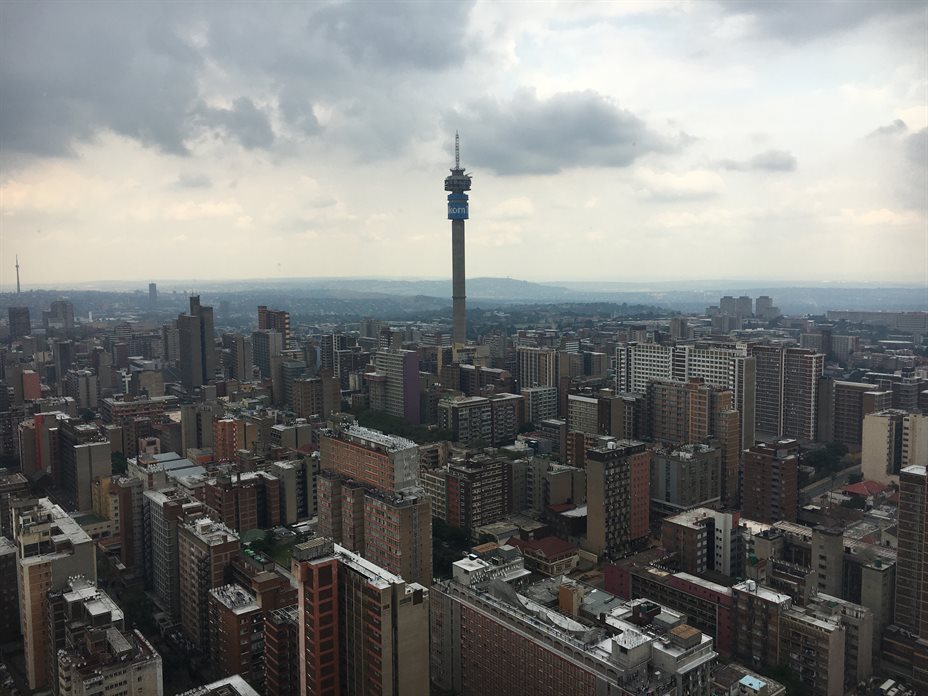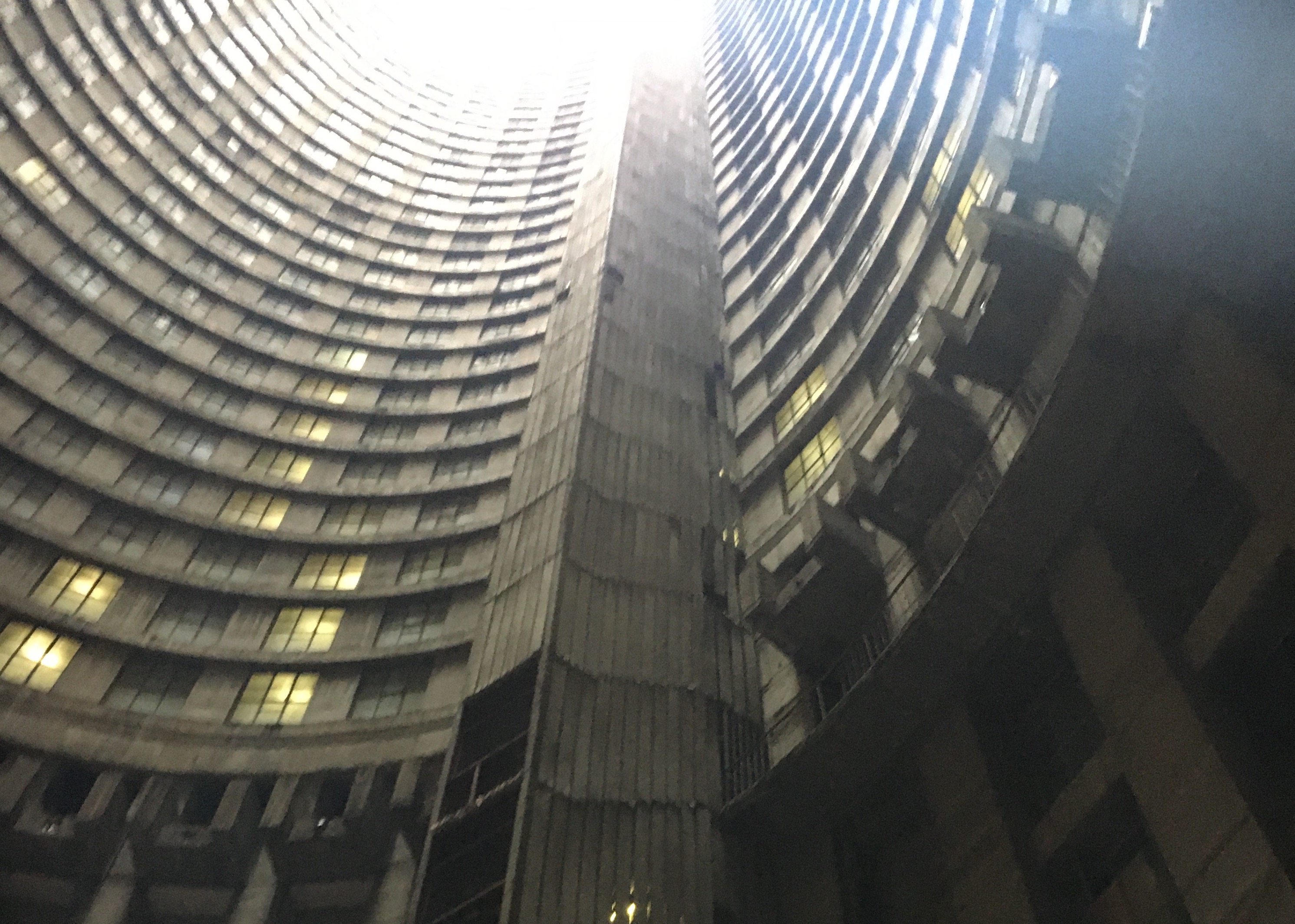
Martin Murray is an established critic of Johannesburg, his two previous books capturing essential elements of the city’s spatial politics after apartheid. In Panic City, published earlier this year, he takes on a widely-rehearsed feature of life in the post-apartheid city: its reputed criminality. Reliable data on violent crime in Johannesburg are hard to come by, a point that Murray is quick to establish. But for every capricious statistic is a resident armed with enough stories of violent mugging, carjacking, and burglary to certify the city’s infamy. Every new visitor is inducted with precautionary tales that advise against certain places, routes, and behaviours. There are just things you shouldn’t do in Joburg, so the story goes. Murray even admits to being ‘followed, robbed, stabbed and almost carjacked’ during his own time in the city.
And in many ways this confessional aside sets the tone for the book’s method. Just as important as the granular detail of suburban fortification, community policing initiatives and new technologies of surveillance are the ordinary myths and legends under which this ‘defensive urbanism’ thrives. In other words, Murray is interested as much by the atmosphere of anxiety as its architecture. Without denying the reality of Johannesburg’s violent everyday life, he attempts to unveil the web of ‘crime talk’ that arguably entrenches the issue, making an emotional totem out of a more complex structural problem. As he puts it, crime and security in the city must be addressed ‘not only in formal and functional terms but in figural and symbolic ways as well,’ a claim that reflects well my own attitude to urban analysis.
A crucial actor in the story of Johannesburg’s ‘fear industry’, to borrow the book’s subtitle, is the business of private security. One of fastest growing sectors in South Africa, it is also amongst the most widely mythologised. But here, at least, Murray arrives at some suggestive statistics. At R45 billion, around £2 billion, the money funnelled annually into the private security industry by local businesses, individual residents, and community groups dwarfs the national state budget for policing by more than a third. There are also between five and seven private security operatives for every active police officer, depending how you count them. In suburban Johannesburg, then, private security companies have all but overtaken public policing operations when it comes to neighbourhood crime prevention. And Murray spends much of the book narrating the truly remarkable array of protections devised by these companies to leverage investment in their services. From basic material infrastructure like high perimeter walls, security barriers, and controlled access points, to new ambient technologies like networked CCTV cameras, infrared detectors, and smart security devices that track suspicious users, the private suburban home has been remade into a sanctuary space. It is entirely sealed off from the supposedly wild and menacing city that encircles it. But there is also a pernicious circular logic at stake in all this safety, which cuts to the heart of Murray’s argument. For not only has the perception of danger risen in tandem with this pattern of fortification, but the entire business model of these security companies relies, at root, in transforming risk into profit. The city’s atmosphere of anxiety is a commercial necessity, its escalation directly equivalent to the growth of the security industry. Put bluntly by Murray: ‘Private security companies cultivate and reinforce both individual and collective fears in order to sell their expensive security products’.

Reading this diagnostic account of Johannesburg, it is hard not to think about it as a sobering, if also extreme, analogue for a much more general pattern of urban development in recent decades. Quite apart from the creeping privatisation of public goods and services, the extensive ‘responsibilisation’ that Murray narrates, especially amongst community policing initiatives, echoes a relatively uniform slide away from the sovereignty of the state towards a more atomised view of the urban sphere in which disparate, even often rival interests are encouraged to self-govern. As a result, the ‘post-public’ city is most pronounced where commercial actors have been able to assert their authority, while those spaces that stubbornly resist this logic—parks, playgrounds, railways, streets, and so on—are allowed to fall into relative disrepair. Of course, in South Africa, there is also a specific history to this divide. And even as Murray talks disparagingly of the ‘anorexic state’, he is also compelled to accept that, when it comes to something like policing, ‘there was never a mythical golden age in which a single state-sponsored organisation […] was able to assert a virtual monopoly over the legitimate use of force and violence’. In short, the sense of panic and fear that organises Murray’s analysis has a much longer origin story, one which certainly bears repeating.
But these feelings are likely also to discover new vectors. It is difficult to read about the anxious, fearful atmospherics that Murray cites without also thinking about the ways in which Covid-19 is unfolding in the city. I returned from a research visit to Johannesburg just a few weeks before lockdown was imposed. As elsewhere, there was very little sense on the streets of the transformational history to come. But South Africa subsequently imposed a particularly restrictive regime on its citizens. Of course, in some ways, suburban Johannesburg is precisely designed for lockdown. Here, immunity is not so very distinct from security. Its enclosed environments are premised upon the very principle of protective isolation. And, to this extent, they perhaps offer a window into the post-pandemic organisation of urban space—at least, that is, for those that can afford it. Entirely missing from this analysis are those many other spaces in Johannesburg, the dense urban high-rises, townships, and informal settlements where the great majority of the city’s residents are housed. Lockdown here is a radically distinct prospect, where the risk of contagion, like the fear of crime, has not been mitigated by design. And reading Murray’s book in the shadow of the pandemic, this wider picture of the city feels conspicuous by its absence.
Ultimately, what we might take from Panic City, then, is less a comprehensive sociology of crime in the city and more a method of affective analysis. What the book provides is a sense of the ways in which the emotional sphere organises space, how feelings like anxiety or fear or panic, currently widely distributed across the world, materialise themselves, architecturally and politically. If immunity is anything like security, Murray offers us a cautionary tale. For wherever uncertainty thrives, so does the tendency towards paranoid thinking—which is to say, a contagion of a different sort, one that licences regimes of suspicion, self-protection and individual security, and all at the eventual cost of collective wellbeing and interdependence.